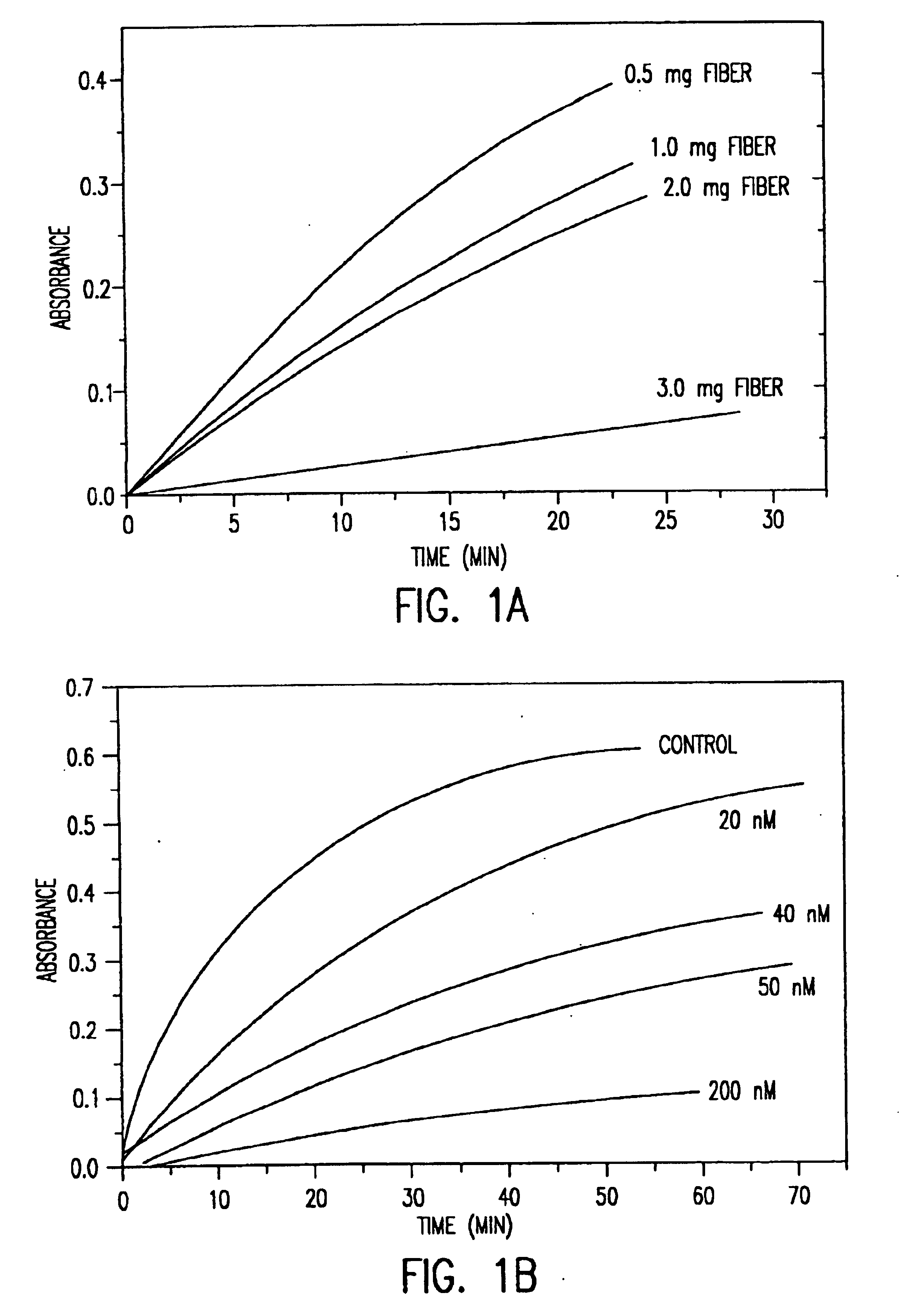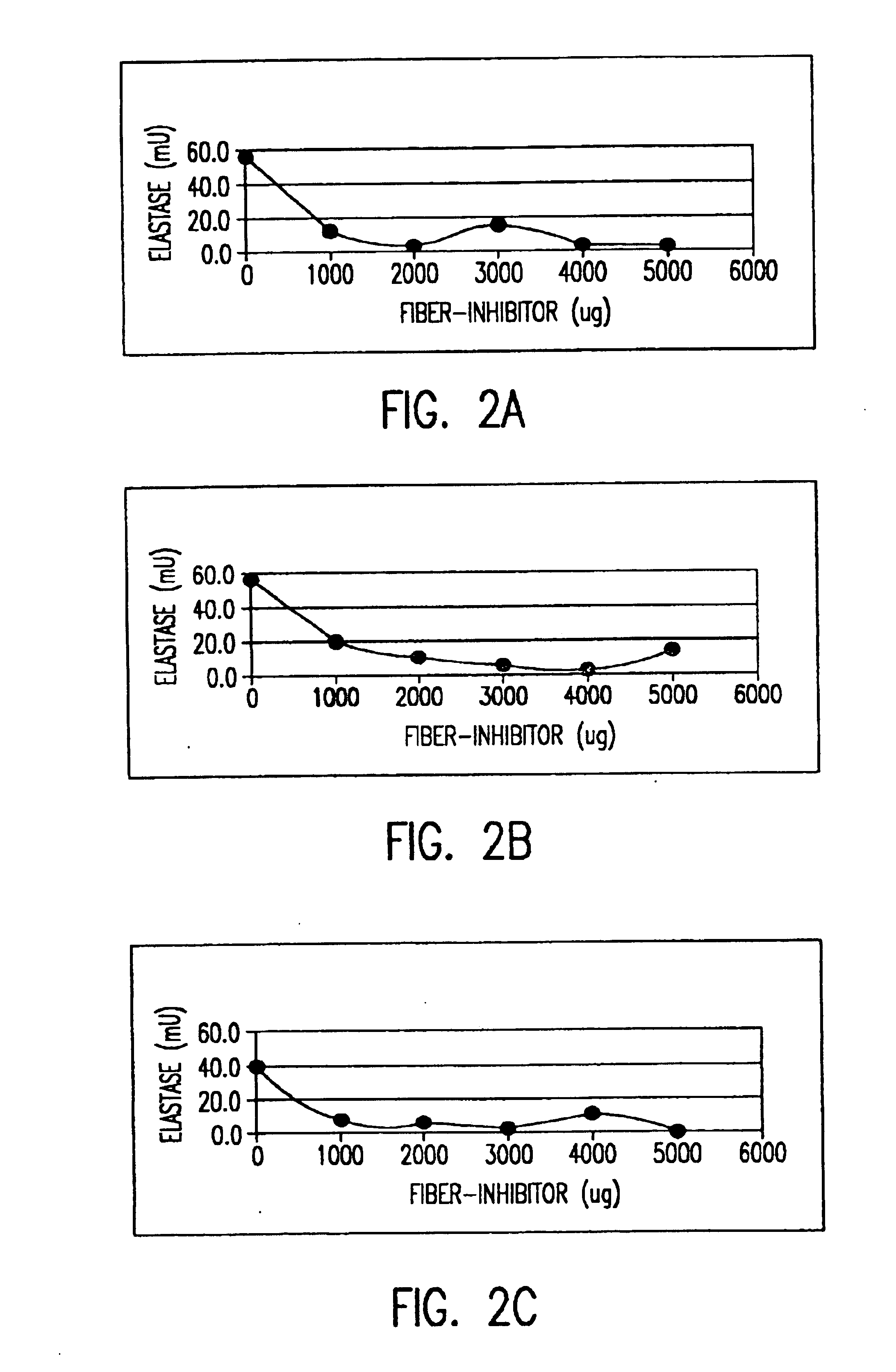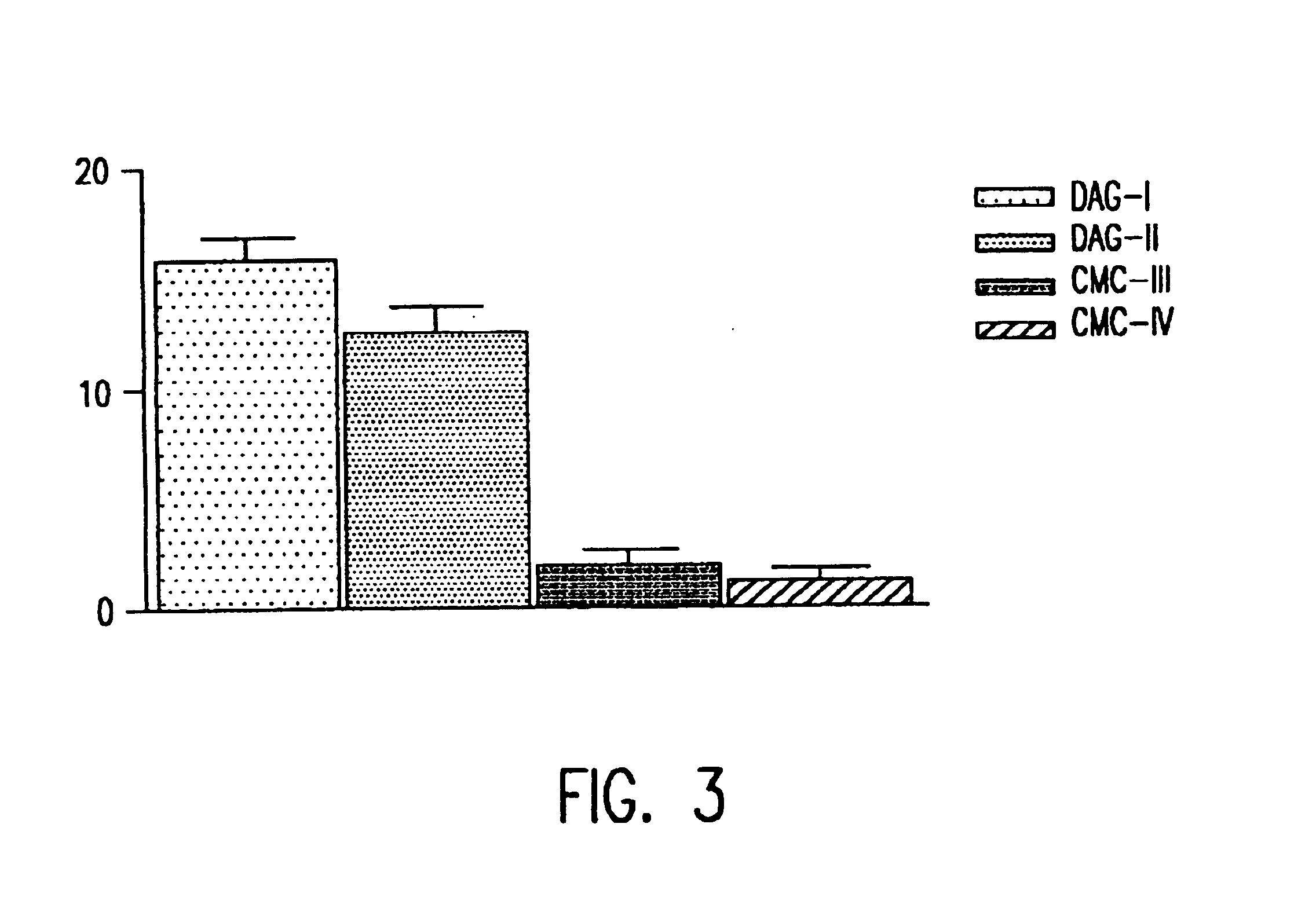Saccharide derivatives especially useful in wound dressings
a technology of saccharide derivatives and wound dressings, which is applied in the direction of antibiotics, drug compositions, peptides, etc., can solve the problems of 750 million dollars for patient care, chronic wounds represent a worldwide health problem, and the cost of chronic wounds is increasing, so as to promote wound healing, improve the deleterious effect of elastase, and restore the balance of proteinase/antiproteinas
- Summary
- Abstract
- Description
- Claims
- Application Information
AI Technical Summary
Benefits of technology
Problems solved by technology
Method used
Image
Examples
example 1
General Synthesis and Formulation of Conjuqates of Cotton Cellulose and Inhibitor Sequences.
[0058]Desized, scoured, and bleached cotton gauze was used for the synthesis. The fabric was also mercerized prior to the synthesis. The cotton twill fabric was cut as circular discs (8.5 cm. in diameter) for the synthesis. Carboxymethylated cotton cellulose was prepared by refluxing 100% cotton twill (290 grams) for one hour with 25% monochloroacetic acid in a sodium hydroxide solution of methanol:isopropanol (13:87, v:v) and 0.5% TX-100. The degree of substitution of carboxymethylation or carboxyl content was determined by measuring the carboxyl content of the cotton with an acid base titration. The carboxyl content was calculated from the following equation: DS=(162)(% COOH)4500-(R)(% COOH)
where R is the molecular weight of the ether sustituent minus one i.e., 58 for carboxymethylcellulose.
[0059]Fmoc-amino acids were purchased from Peptides International (Louisville Ky.).
[0060]Esteri...
example 2
Peptide Synthesis on Cotton Cellulose
[0061]The Val-Pro-Val recognition sequence was synthesized with glycine as a COOH-terminal linker on 8.5 cm discs of cotton twill. The synthetic protocol for the synthesis of Val-Pro-Val-Gly on cotton consisted of the following steps as described by Eichler. Acetylation of Fmoc-Gly-bound cellulose cotton was accomplished with acetic anhydride / NMI / DMF 1:2:3 (v / v / v) for 60 min. The cotton discs were washed with DMF (3×10 mL) and DCM (2×10 mL). Deprotection of Fmoc was accomplished in 20% piperidine / DMF, 15 min; wash (3×DMF, 2×DCM); coupling (0.3 M Fmoc-amino acid / HOBT / DIC in DMF, 90 min); wash (3×DMF; 2×DCM). Ten microliters of a bromophenol blue / DMF solution was added during the coupling step. Two hundred milligram samples were subjected to amino acid analysis. The resulting ratios of amino acids from the analysis was 1:2 (Pro:Val) and the resulting yield was 1.1 micromoles / gram cotton. The resulting peptido-cellulose conjugate of cotton gauze as ...
example 3
Synthesis of Val-Pro-Val-O-Methylester
[0062]A solution of Carbobenzoxy-Val-Pro-OH (1 g, 2.8 mmol) in 30 mL of dry tetrahydrofuran was cooled to −5° C. and N-methylmorpholine (0.29 g, 2.8 mmol) and isobutyl chloroformate (0.391 g, 2.8 mmol) were added and stirred for 1 h. A solution of Val-OMe (0.49 g, 2.8 mmol) in dioxane / water (7:3) was adjusted to pH 7 with diisopropylethylamine. The solutions were combined and the mixture stirred for 3 h, water added and the tetrahydrofuran evaporated. The resulting oil was extracted with ethyl acetate and subjected to a work-up of 1N HCl, saturated NaCl, and drying over sodium sulfate yielding a clear oil. The product was confirmed by FAB MS ([M+1]=461) and the N-protecting group was removed by catalytic hydrogenolysis using ammonium formate. (Anwer, M. K., & Spatola, A. F. (1980) Synthesis 11, 929-932). The product Val-Pro-Val-OMe may be used in the formation of carboxymethylcellulose-Val-Pro-Val-OMe conjugate as outlined in example 4, or it ma...
PUM
| Property | Measurement | Unit |
|---|---|---|
| pH | aaaaa | aaaaa |
| temperature | aaaaa | aaaaa |
| pH | aaaaa | aaaaa |
Abstract
Description
Claims
Application Information
 Login to View More
Login to View More - R&D
- Intellectual Property
- Life Sciences
- Materials
- Tech Scout
- Unparalleled Data Quality
- Higher Quality Content
- 60% Fewer Hallucinations
Browse by: Latest US Patents, China's latest patents, Technical Efficacy Thesaurus, Application Domain, Technology Topic, Popular Technical Reports.
© 2025 PatSnap. All rights reserved.Legal|Privacy policy|Modern Slavery Act Transparency Statement|Sitemap|About US| Contact US: help@patsnap.com



